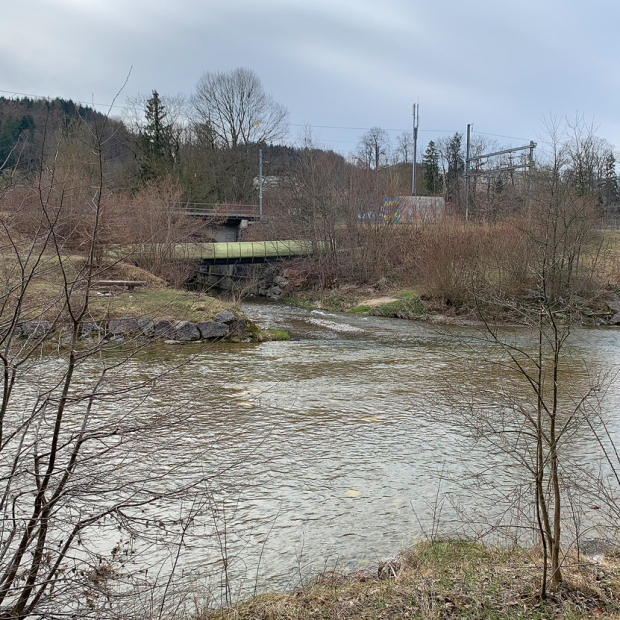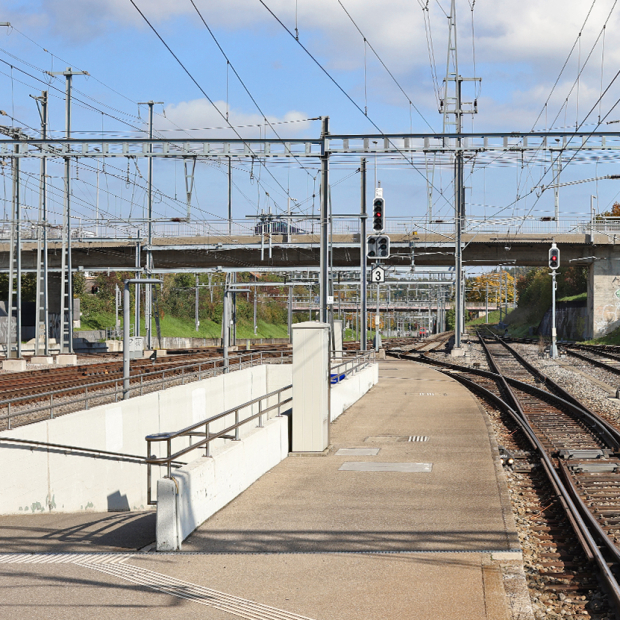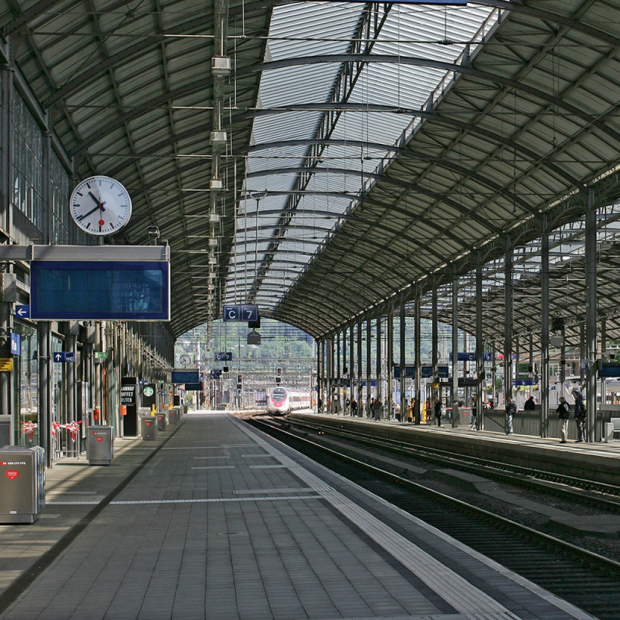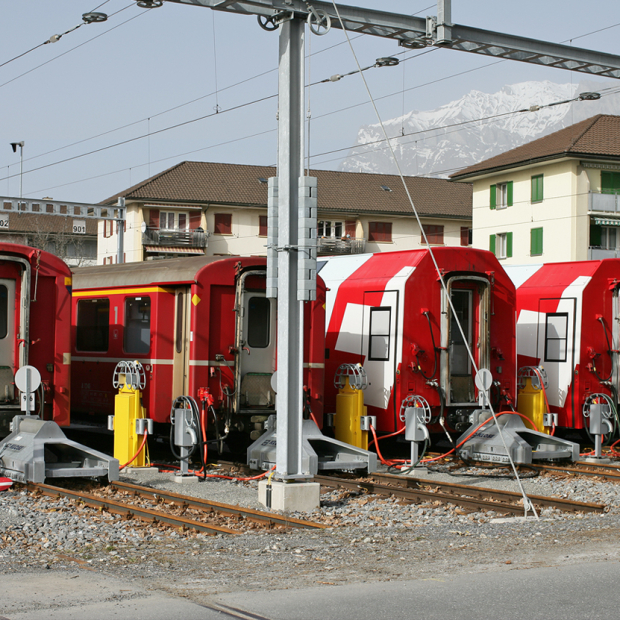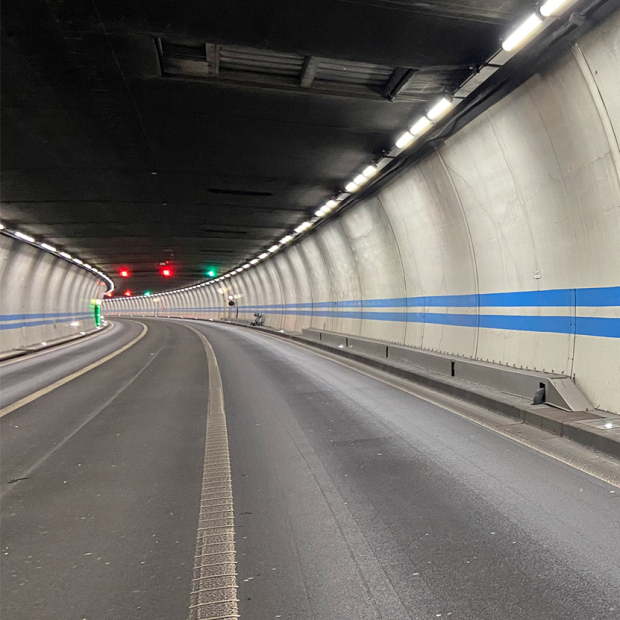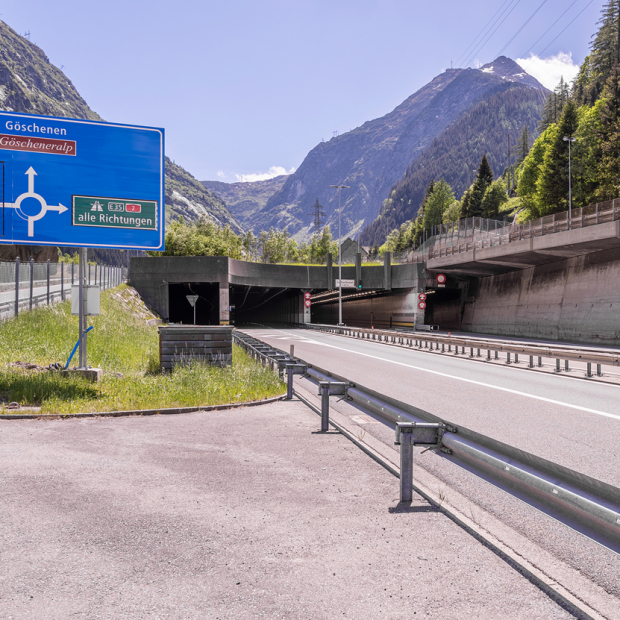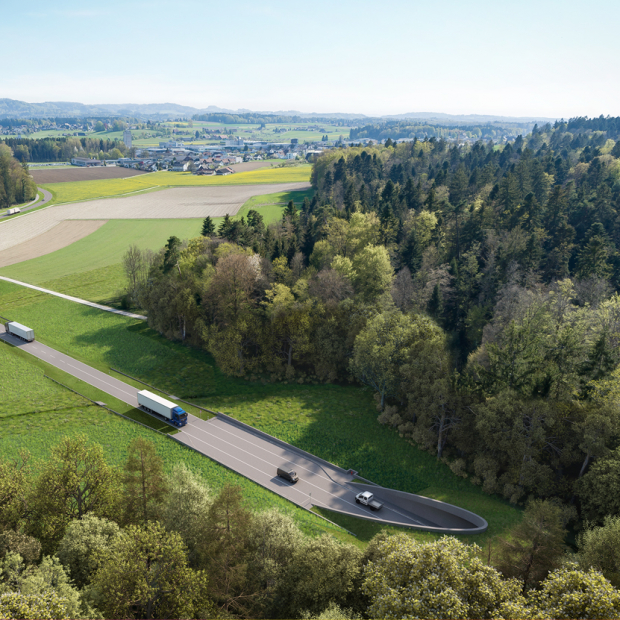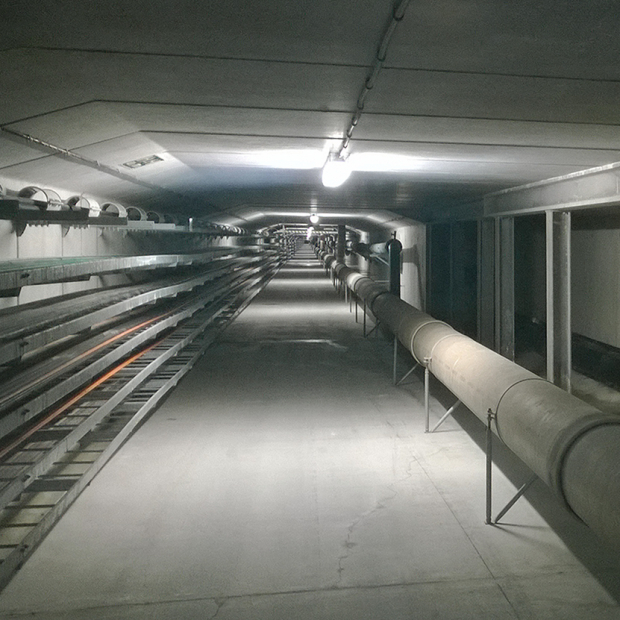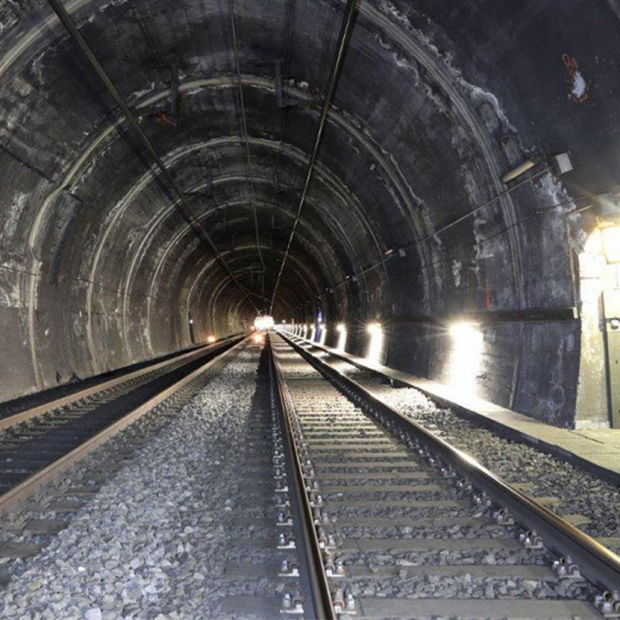
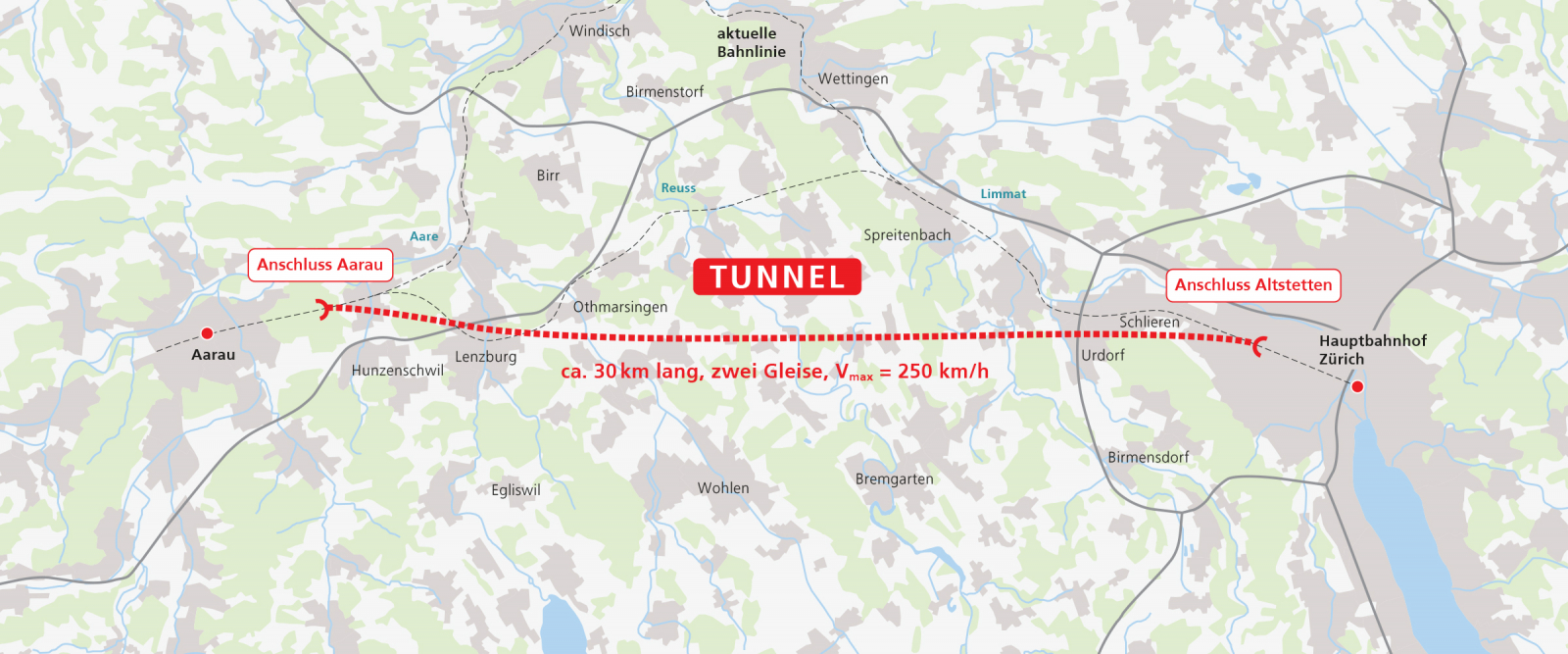
Concept study for a direct rail link between Aarau and Zurich
Swiss Federal Railways (SBB) is planning a new double-track, approximately 20-miles tunnel link between Rupperswil (Aarau) and Zurich-Altstetten. As a key member of an engineering consortium, EBP was commissioned to carry out a study of the project’s overall feasibility and arrive at an estimate the associated costs.
Current state
As a part of the main east-west transportation axis in northeastern Switzerland, the existing rail line that links Olten, Aarau and Zurich is already operating at or beyond maximum capacity. A consensus has been reached on the need to eliminate the bottleneck in the area of Aarau-Zürich in the medium term. Moreover, the authors of a comprehensive study of development alternatives have concluded that the best solution would be to build a double-track, direct tunnel link between Rupperswil and Zürich-Altstetten. However, it is already clear that the direct Aarau-Zurich link will not be included in the 2030/2035 expansion phase.
Assignment
The double-track, approximately 30-km tunnel system passes through geologically and environmentally sensitive areas. Connecting the tunnel to the existing railway network would also be extremely challenging from an engineering standpoint. In light of these factors, SBB commissioned a study of the project’s general feasibility, the presentation of project variants and an estimate of the associated costs (i.e. with an accuracy level of +/- 50 percent). Furthermore, a qualitative risk analysis is needed, along with verification of forward compatibility with long-term infrastructure development.
Specifications
The tunnel is to be designed only for passenger trains traveling at a maximum high speed of 155 mph.
Alternative tunnel systems
The scope of the study includes the analysis of various tunnel systems. The variants up for consideration include two single-track tunnels, one double-track tunnel and a combination of both tunnel types. Here, the variants involving shorter open sections would seem to be especially compatible with double-track tunnel systems. Given the fact that right-track operation applies after the town of Killwangen-Spreitenbach on the approach lines from Aarau to Zurich Central Station, provision is to be made for a crossing-free changeover from right-track to left-track operation.
Special challenges
The construction of the new rail line presents many challenges:
- Optimization
The tunnel system is to be optimized in terms of cross section dimensions, train speed and energy consumption for each variant using complex ventilation calculations. These optimizations are also to take account of the latest generation of trains. - Environmental protection
EBP is carrying out conflict analyses to identify and demarcate wildlife corridors, nature conservation areas, groundwater flow, and aquifer protection zones. These analyses provide a basis for minimizing environmental impact in the context of the alignement design. - Construction phases and logistics
The concept study also addresses construction phase planning and construction logistics. The integration of the tunnel link into the existing railway network will require detailed studies relating to construction sequences and access to construction sites located between the high frequent railways. - Safety
A tunnel system that is 30 km or so in length requires particular safety features that will ensure the safety of passengers at all times – such as in the event of fire, technical malfunction or breakdown of rolling stock. The engineering consortium will therefore complete qualitative risk analyses for use in the context of comparing the alternative tunnel systems. - Maintenance
In addition to an assessment of structural feasibility, a maintenance plan will also be drafted for each of the shortlisted tunnel variants. Different tunnel systems may require very different operational and structural maintenance programs, which could also have an impact on the tunnel systems’ basic availability.

